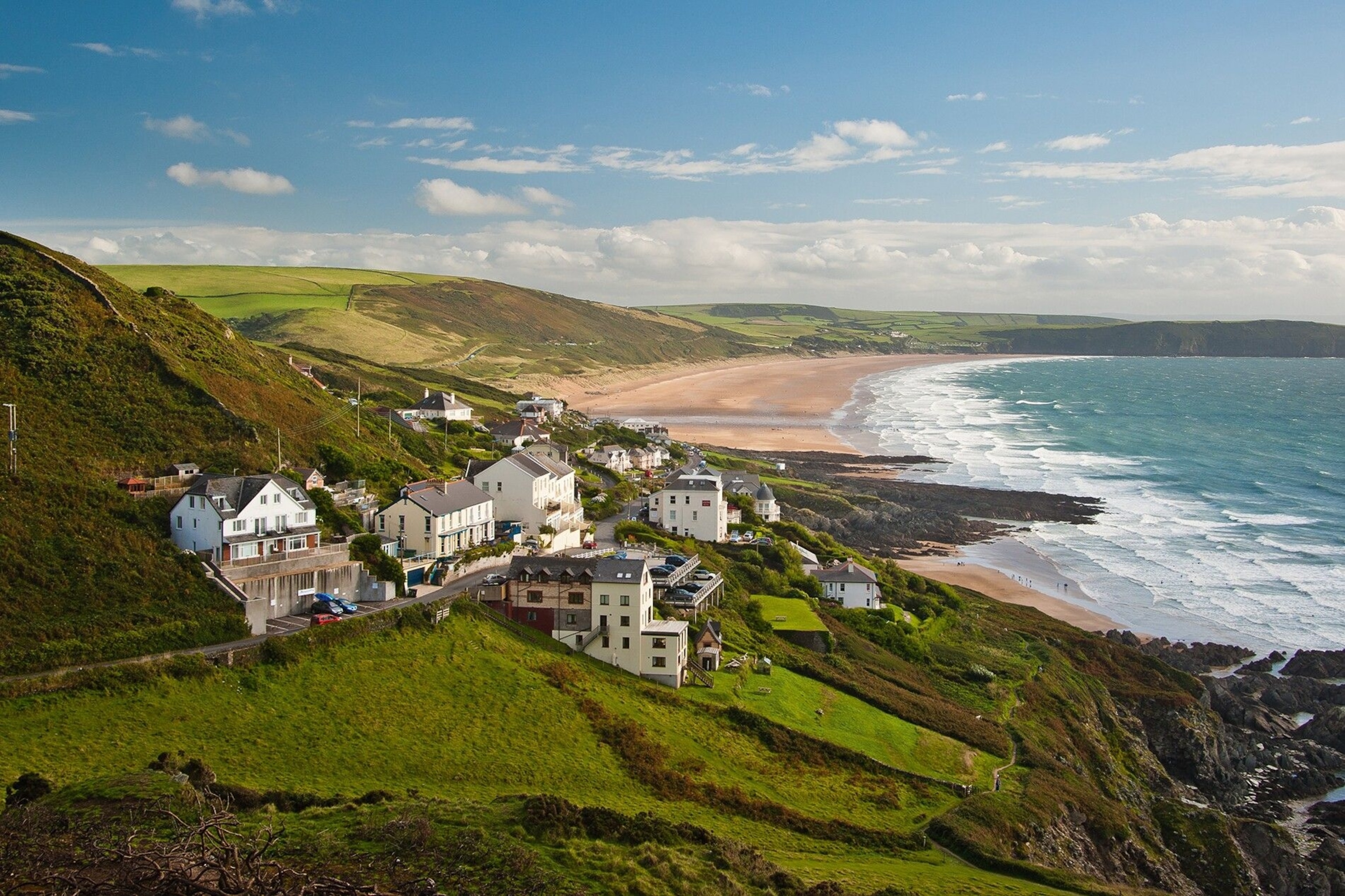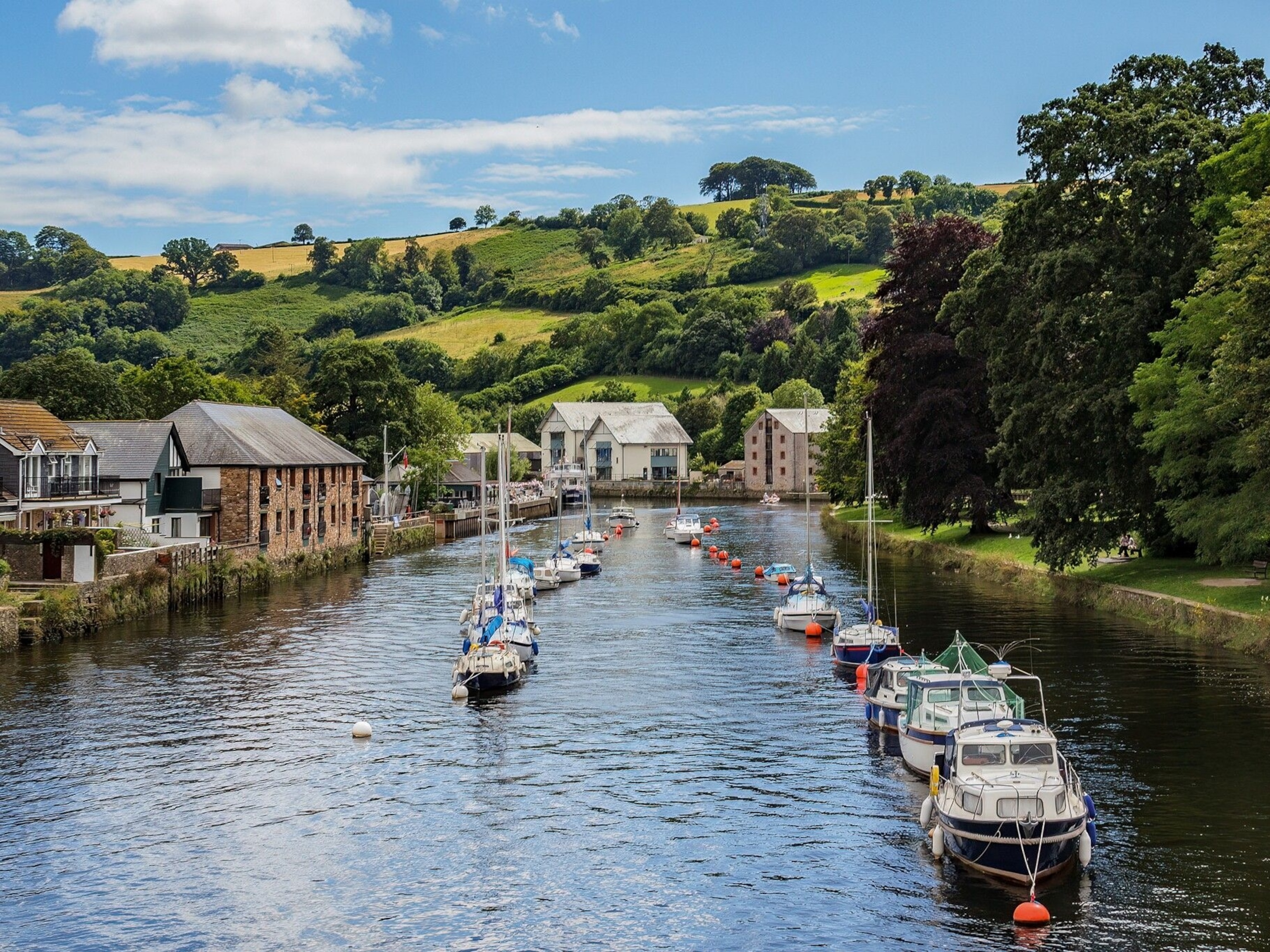
What to do in North Devon, from world-class surfing to coastal hiking
This corner of the South West might be best known for its pounding surf, but beyond the waves there’s a wild landscape to discover that’s ripe for adventure.
16 Aug 2021, 14:15 BST — Strung with coves and inlets pummelled by Bristol Channel waves, it’s no wonder this stretch of the coastline has become one of the UK’s surfing hotspots. And beyond the surf, there's more to discover: running from the edge of Exmoor National Park to the Cornish border, this Area of Outstanding Natural Beauty (AONB) is a magnet for adventure-thirsty hikers, cyclists and families, thanks to its myriad landscapes, including vast sand dunes and windswept headlands. With a smattering of seaside villages, renowned surf schools and campsites to boot, the area’s ideal for a relaxing weekend getaway or an activity-filled escapade.
What to do
This is a watersports paradise, so dive in. Experienced surfers head to Croyde Bay to tackle its wild waves, while beginners head for the wider shores at Westward Ho!, Woolacombe or Saunton Sands with their slower, longer waves — which are also ideal for kiteboarders and windsurfers. Swimmers, meanwhile, are naturally spoiled for choice — the quieter beaches at Lee Bay and Combe Martin are best for those seeking solitude. Croyde Surf Academy is a one-stop shop for all things aquatic, with surf courses, standup paddleboarding lessons and boards for hire available.
And it’s not all about the sea. Here, you’ll also find hikers lacing up their boots to explore sections of the South West Coast Path, which threads along the length of the AONB. For an easy ramble with spectacular coastal scenery, walk the 10-or-so miles between Saunton Sands and Woolacombe, with a pitstop in Croyde village. While you’re there, shop for handmade crafts at the Croyde Craft Market, held every Thursday.
Don’t miss the sprawling Braunton Burrows sand dune system, behind Saunton Sands. It’s the second-largest dune system in Britain, and its unique ecology of sand and grasslands has meant it’s been designated a UNESCO Biosphere Reserve. The area supports around 470 wildflower species, plus a number of unusual insects and other fauna. A map and wildlife-spotting guide is available to download online.
We like
Lying some 11 miles off the coast, the tiny isle of Lundy — it’s just three miles long by half a mile wide — is a wildlife haven, home to a variety of species from puffins to pipistrelle bats. Aside from its natural spectacles, adventures await too, with a wealth of dive sites and challenging, rocky climbs like the ominously named Devil’s Slide — a sheer slab of granite towering above the sea. Take a day trip here from Bideford or Ilfracombe on the island’s own supply ship, the MS Oldenburg. Boutique and castle stays can be booked with the Landmark Trust. What’s more, tourism funds contribute directly to vital wildlife conservation efforts and the island’s volunteer scheme.

Where to stay
The grand Saunton Sands Hotel has been a stalwart of North Devon hospitality since 1933. Presiding over its namesake beach and Braunton Burrows, it has two heated swimming pools, a state-of-the-art thermal spa and an AA Rosette-winning, glass-fronted restaurant. Sea-facing doubles in the summer with bed and breakfast from £370.
Don’t miss
The craggy, weather-beaten headland of Baggy Point juts out into the Bristol Channel between Croyde and Woolacombe, with views extending out to Hartland Point and Lundy. Walk the short, blustery marked trail for breathtaking views, following wildflower-dotted paths and spotting birds including stonechats and Dartford warblers.
Where to eat
After a day on the water, refuel with hot bowls of surf-inspired street food at Biffen’s Kitchen in Croyde. From Jamaican jerk chicken to vegan Indonesian satay curry, the dishes served from Biff’s ‘snack shack’ reflect the cuisine of the world’s surfing hotspots.
Alternatively, head to thatch-roofed May Cottage Tea Rooms. There’s a menu of homemade cakes and sandwiches, but it’s the cream tea — served with buttery, plump scones and Devonshire clotted cream — that has loyal locals returning in their droves.
Published in the April 2021 issue of National Geographic Traveller (UK)
Find us on social media
Facebook | Instagram | Twitter





